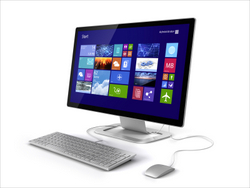
When physicians spend too much time looking at the computer screen in the exam room, nonverbal cues may get overlooked and affect doctors’ ability to pay attention and communicate with patients, according to a Northwestern Medicine study.
Published in January in the journal Medical Informatics, the study found that doctors who use electronic health records (EHR) in the exam room spend about a third of their visits looking at a computer screen.
“When doctors spend that much time looking at the computer, it can be difficult for patients to get their attention,” said Enid Montague, PhD, first author of the study. “It’s likely that the ability to listen, problem-solve and think creatively is not optimal when physicians’ eyes are glued to the screen.”
Montague is an assistant professor in Medicine-General Internal Medicine and Geriatrics at Northwestern University Feinberg School of Medicine and an assistant professor in Industrial Engineering at the McCormick School of Engineering and Applied Science.
Using video cameras, Northwestern scientists recorded 100 doctor-patient visits in which doctors used computers to access electronic health records. The videos were used to analyze eye-gaze patterns and how they affected communication behavior between patients and clinicians.
“We found that physician–patient eye-gaze patterns are different during a visit in which electronic health records versus a paper-chart visit are used,” Montague said. “Not only does the doctor spend less time looking at the patient, the patient also almost always looks at the computer screen, whether or not the patient can see or understand what is on the screen.”
Understanding physicians’ eye-gaze patterns and their effects on patients can contribute to more effective training guidelines and better-designed technology. Future systems, for example, could include more interactive screen sharing between physicians and patients, Montague said.
“The purpose of electronic health records is to enable healthcare workers to provide more effective, efficient, coordinated care,” Montague said. “By understanding the dynamic nature of eye-gaze patterns and how technology impacts these patterns, we can contribute to future EHR designs that foster more effective doctor–patient interaction.”
This study validates previous research that suggests the way EHRs are currently used in the exam room affects physicians’ communication quality, cognitive functioning and the ability of patients and physicians to build rapport and establish emotional common ground.
The other author of this paper is Onur Asan, a graduate research assistant at the University of Wisconsin, Madison.
This research was supported by grant 1UL1RR025011 from the Clinical and Translational Science Award program of the National Center for Research Resources, the National Institutes of Health. The Wisconsin Research and Education Network also supported this research.






